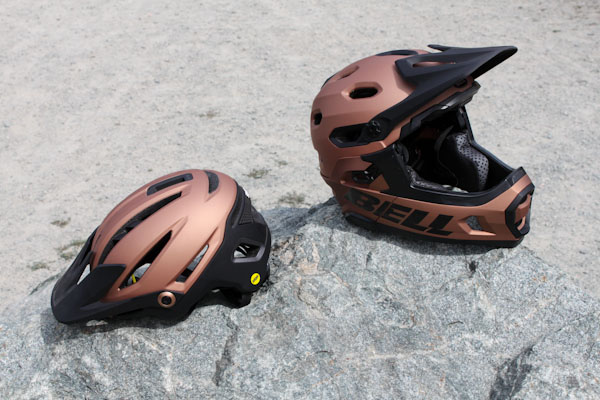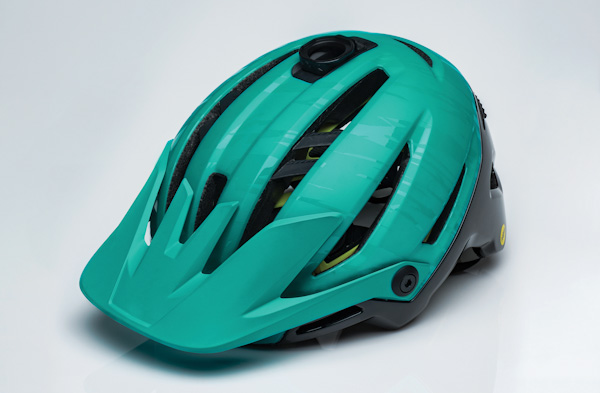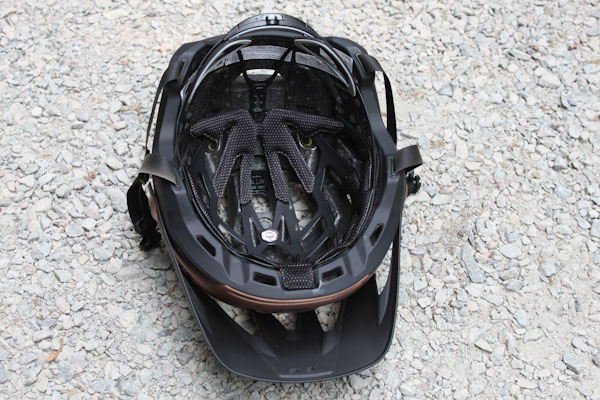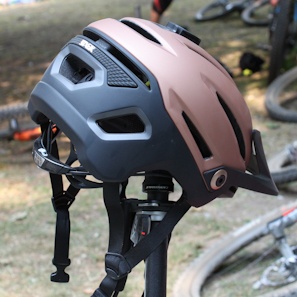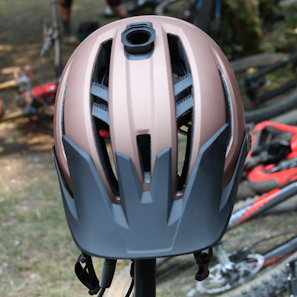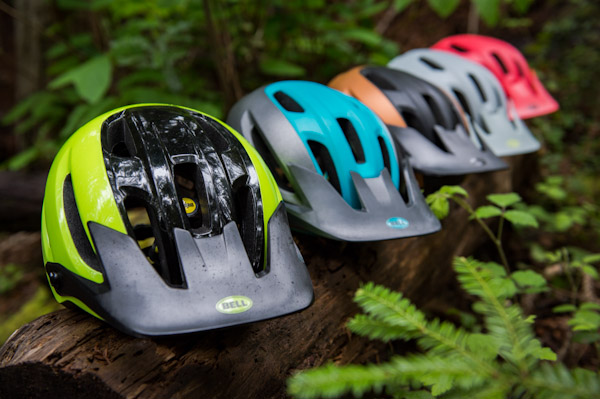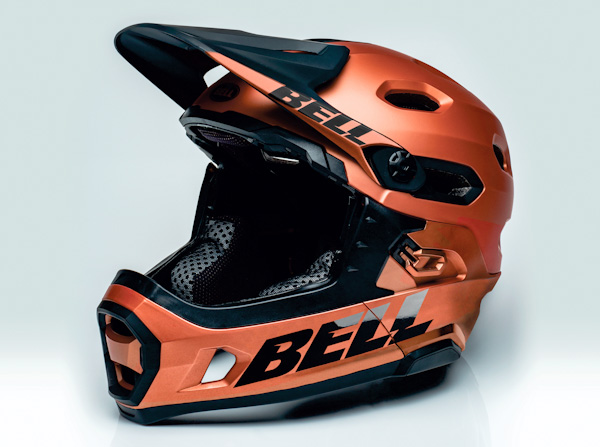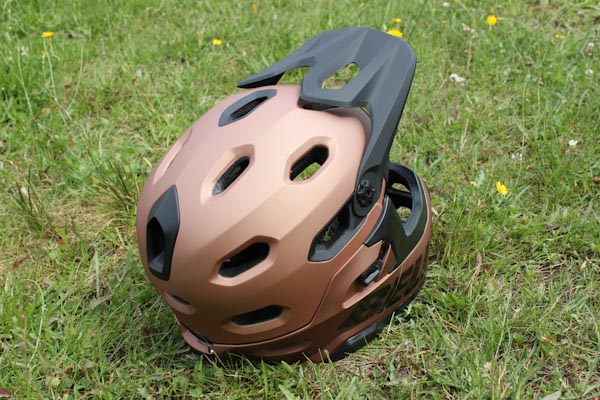It’s here, it’s here! Crankworx has descended upon Whistler, and before day one Bell Helmets had a big media crew assembled to show off some upcoming 2018 models. These lids include some serious safety technology: Bell’s helmets use two densities of foam with hard shells molded into both layers, and they’ve cleanly integrated the MIPS system with their retention harness.
I joined the crew for a trail ride in the new Sixer and squeezed in some bike park laps with the convertible Super DH as well. This is just a sneak preview of the 2018 helmets, while Bell’s official launch will happen at Eurobike later this year. Read on for details on three new models, plus my first-ride impressions of the Sixer and Super DH…
Sixer:
The new Sixer trail helmet replaces Bell’s popular Super model for 2018. Using an all-new headform, Bell has adjusted their shell shape to better accommodate a wide range of riders.
The Sixer is EPS molded twice with two densities of foam, both of which have hard shells (the inner shell is visible on the bars that bridge the main front/top vents). The Sixer uses Bell’s Dual Flow ventilation, which isn’t about the number of vents so much as how they direct and expel hot air.
The Sixer’s Integrated MIPS design combines the MIPS harness with Bell’s Float Fit Race retention system, which is a very low-profile way of incorporating advanced crash protection. The rear adjustment dial offers four height positions and its pads can be adjusted inwards and outwards independently.
A new sweat guide directs perspiration to drip off in front of your face, and Bell’s POV camera/light mount clips out if you don’t need it. The Sixer’s visor clicks into four positions offering enough room to carry goggles beneath it.
The Sixer is available in S-XL sizes, with a medium listed at 410g. This model will be available in mid-November, at a cost of $150 USD. The Sixer comes in six colorways, plus three Sixer Joyride graphics (Joyride models are identical in construction but only come in S/M sizes).
4Forty:
Replacing the Stoker model, the 4Forty is Bell’s value offering for trail riders. The 4Forty still offers the same coverage as the Sixer, with a lower hard shell that keeps the foam fully concealed. The 4Forty can be purchased with or without the MIPS system, which is integrated with the Float Fit retention harness. This model also includes Bell’s sweat guide and goggle-friendly adjustable visor.
The 4Forty hits the market by mid-october, in S-XL sizes. There are seven colors to choose from, plus three Hela Joyride graphics – the Helas are identical to the 4Forty, but only S/M sizes are offered. Retail prices are $75 without MIPS, or $95 with.
Super DH:
Whereas the Super 3R is intended for enduro, the new Super DH is for full-on DH riding. It provides more coverage than the 3R and surpasses the same safety specs as Bell’s non-convertible full faces. Like the Sixer, the Super DH is built around Bell’s new headform.
Bell’s MIPS spherical system allows the Super DH to work like a ‘ball and socket’ under impact. Since the two foam layers both have hard shells, Bell has incorporated the MIPS slip planes in between them – this allows the inner shell to rotate within the outer layer, reducing rotational forces in a crash.
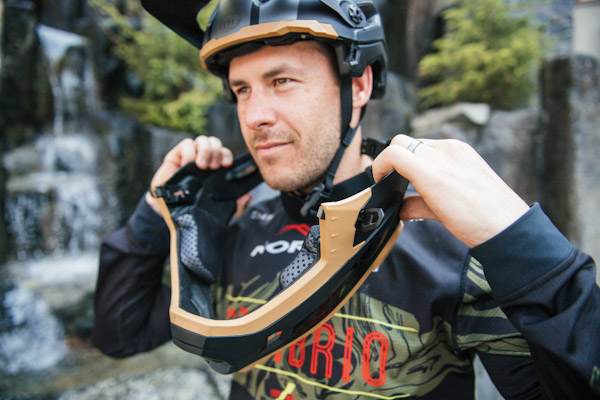
The Super DH’s removable chin bar stays together at the rear clip, so it can be carried on your handlebars between stages. The Float Fit DH retention system provides easy adjustability for a snug fit, and the visor moves far enough up to stash goggles on your forehead. The Super DH will be available as of mid-December, in six colorways and S/M/L sizes. A size small weighs 860g, and MSRP is $300.
First Ride Impressions:
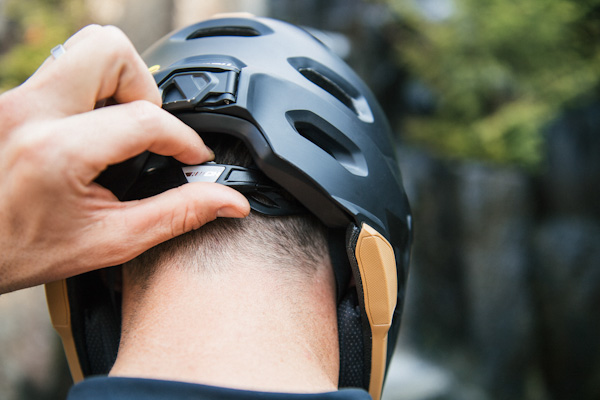
I tested the Super DH in full-face mode with a few laps in the Whistler Bike Park. The shell shape fit my head quite well, with no tight spots anywhere. I noticed the rear of the helmet sweeps up quite high versus a normal full face, but it does cover your entire skull. My goggles fit well in the helmet, and the field of view was ample in all directions.
Not surprisingly the Super DH’s retention system kept the helmet perfectly snug on my noggin. This is definitely a superior way to get a proper fit over the old method of buying the tightest helmet you can tolerate!
Ventilation in the Super DH was awesome; even at low speeds I could feel air flowing freely over my head, making this the coolest full-face lid I’ve worn yet.
One thing that might bug some people is that the helmet makes creaky noises when your head shakes inside it- I’m not sure if it’s the retention harness rubbing on the interior foam or the inner shell shifting within the outer foam layer. I’d say it’s a small price to pay for the added protection MIPS provides, but figured it was worth noting.
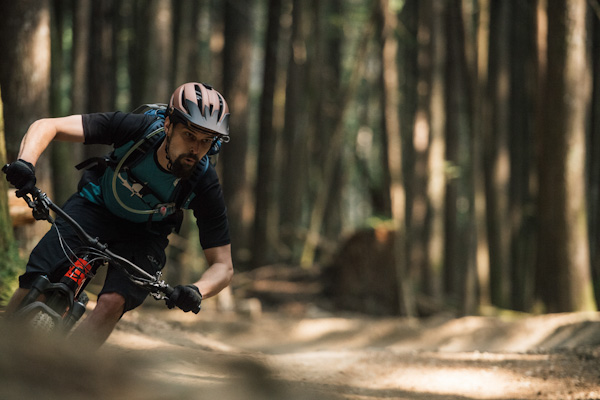
Like the Super DH, the Sixer’s shape worked great for me. The Fit Float Race retention system provided a cozy but very snug fit, so the helmet never budged. The Sixer’s interior pads are slim but fairly cushy, and the sweat guide seems to do its job too. We rode on a very hot day, and right away I saw a few drops fall off the front as intended. It didn’t totally prevent me from getting a sweaty forehead and eyebrows, but again, it was a HOT ride.
I thought the vents worked well as long as I was moving and air was flowing, and the Sixer didn’t feel heavy on my head. The Sixer’s MIPS and retention harness doesn’t produce the same noises that my Super DH did, it just keeps you safe in silence.
For more information, details and specs on Bell’s 2018 helmets are now available online.
